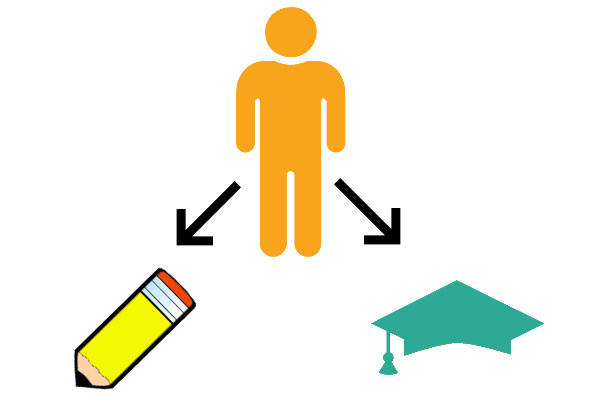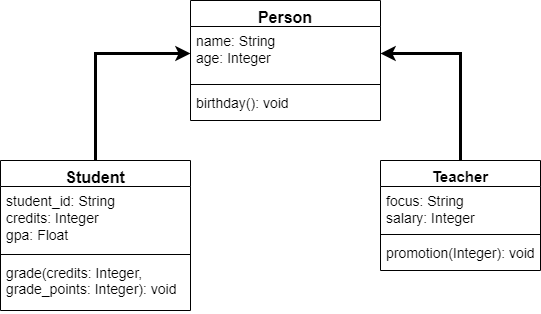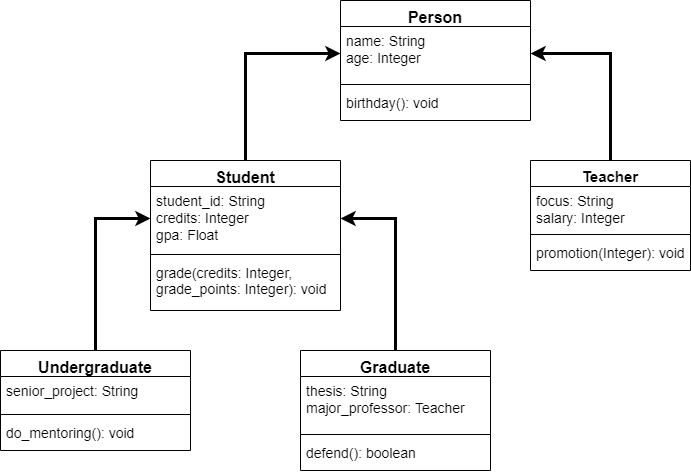Inheritance
The arrowheads in the video's UML are the wrong type. UML uses different arrowheads to mean different things. Inheritance uses an "open triangle" not filled in arrows as depicted here. The images in the text have been updated.
For example, we could create a class called Person in our program, and that class could represent all of the attributes and methods that are shared by both students and teachers, as well as by any other people we might want to include in our program.
Then, we can update the Student and Teacher classes to inherit those attributes and methods from the Person class. In effect, we are saying that a student or a teacher is also a person, so anything that a person is or does also applies to a student or a teacher.
There are some special terms we can use to describe the classes in an inheritance relationship. In this example:
Person is the parent class, base class, or superclass. Student and Teacher are child classes, derived classes, or subclasses of Person.
This is a really important concept in object-oriented programming. It allows us to easily define the similarities between several classes.
In a UML diagram, we can show this inheritance relationship using an open arrow between the classes. It’s important to remember that the arrow points to what the class is inheriting from. So, the arrow going from the Student class to the Person class says “the Student class inherits from the Person class.” We can also remember this by saying the arrow “Points to the Parent” class. This can be confusing, so we must always make sure we look closely at the direction the arrow is pointing in our UML diagrams.
Finally, we can even go further and create another set of classes to represent Graduate and Undergraduate students, and have them inherit from the Student class. There is no limit to how many layers of inheritance we can create in our programs. In addition, some languages—such as Python—allow a class to inherit from multiple parent classes!


